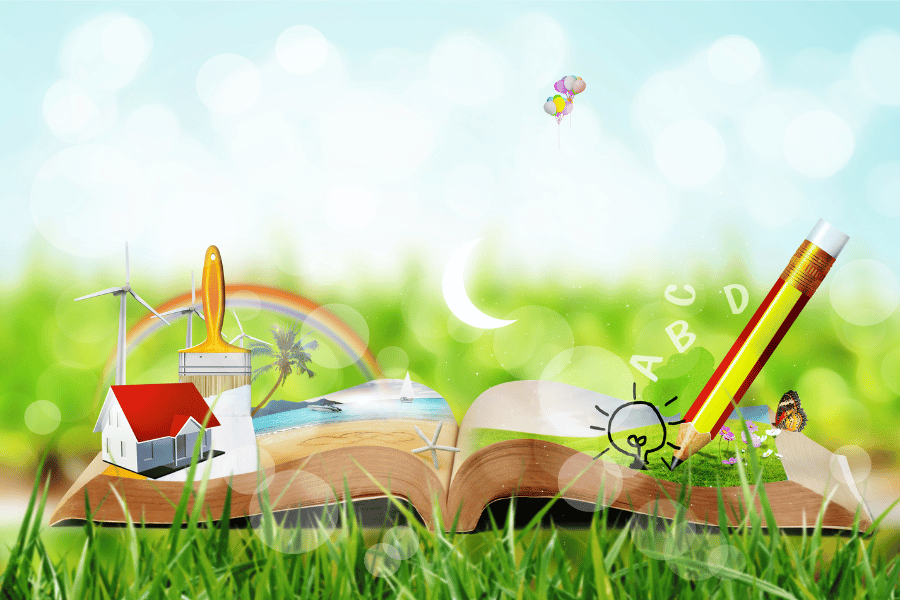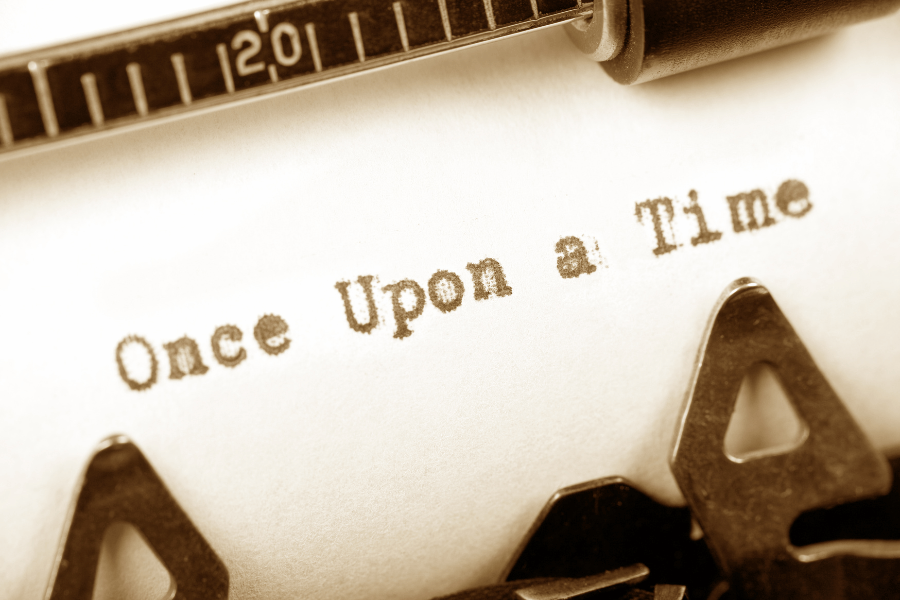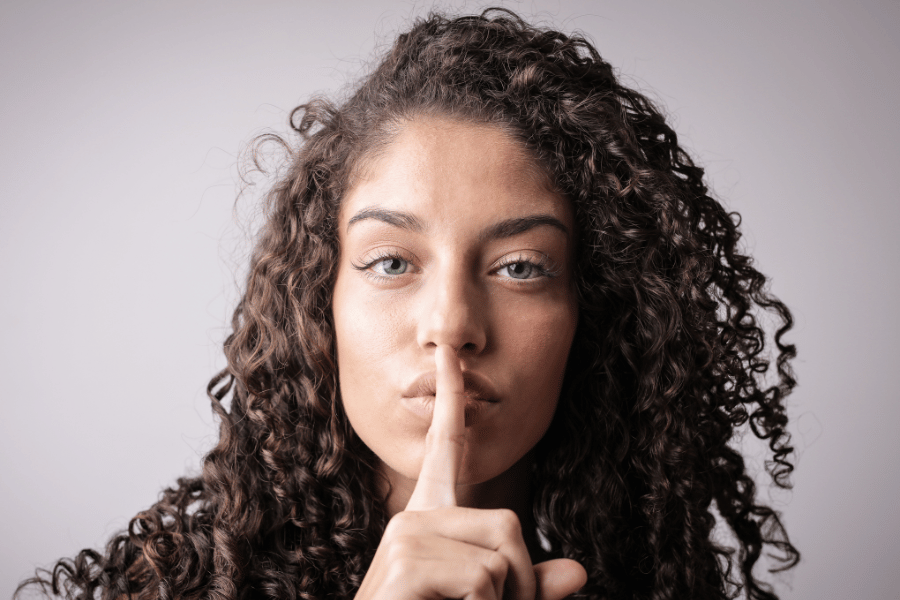Exposition examples invite your audience to a place they’ve not yet traveled to:
An insider’s view.
Like packing for a trip with just the right amount of luggage, exposition gives your audience just enough information to keep them curious and longing for more.
And if you give your audience just what they need to decipher a story without giving away the plot, you’ll have eager participants waiting for the next clue.
So let’s dive into this literary device with examples and the complete download of why your story needs an exposition.

What is Exposition?
An exposition is a literary device that sets up a story with background information.
Divulging exposition before the rising action starts allows the audience to gain perspective on the characters, the setting, important occasions, or historically significant events.
An exposition helps your audience emotionally invest in the history that prompted the narrative. This entices them to read further and allows them to connect to the story with a more profound understanding.
As simple as this may sound, there is an art to exposition because you don’t want to give away too much of the backstory. Doing so, ultimately risks the loss of your audience’s attention or bores them to tears.
However, too little information creates confusion and adds frustration that may have your readers calling it quits.
Why You Want to Use Exposition in Your Writing
Exposition gives the context to your story. Without it, your readers are lost.
Can you imagine wanting to connect with your brother by asking him how his day went, and he tells you he’s eating a salami sandwich?
Wait, what?
What does eating a salami sandwich right now have to do with his day?
And this is what exposition does; it gives enough background information to understand what’s happening and feel connected to the character.
Exposition is the backstory or the setup.
Sure, you can skip exposition in some creative writing, like poetry.
But it’s a vital literary device in plays, novels, movies, mysteries, and thrillers.
Audiences love creating connections to characters with desires, fears, and challenges because they are character-driven.
The 5 Types of Exposition Explained
Let’s look at the five ways you can use exposition in your stories.
- Description — giving a complete explanation of the topic, with evidence, examples, and background history. This connects the reader to the point of origin.
- Comparison — comparing two topics together gives context to the current story. Matters, like religious beliefs, can be conceptual or more concrete, like living in New York versus Australia.
- Cause and Effect — showing how past events become the source of the character’s current behaviors. For example, poor health is a by-product of low income, where health is suffering due to inadequate funds to afford healthier foods.
- Problem and Solution — explains a problem and offers a viable solution. For example, making fresh food accessible to low-income families to better their health.
- Sequence — this is primarily used to describe a process, like detailing the manufacturing steps to make a crayon. However, you can also use sequence to illustrate a timeline of events to show backstory.
How to Use Exposition Effectively

Using exposition effectively is always about dancing that fine line between too much and not enough information.
Often a strategic choice, your exposition should do two things; pull the reader in enough to feel like they have contextual background and understanding of the backstory, and gaging by the type of story (fiction vs. non-fiction) what the appropriate amount of information needed is.
And if you’re setting up the story in an unfamiliar location to the reader, such as fantasy, sci-fi, or historical fiction, then be sure to include enough context to guide a firm understanding of the experience in this foreign reality.
Direct vs. Indirect Exposition
Let’s explore the two ways exposition can express itself in your stories.
When delivered through narration or dialogue, direct exposition pauses the story to inform the reader of some vital information — often seen in classic faerie tales and literature.
Direct exposition example:
The Emperor’s New Clothes
“A vain emperor hired two people to make him some new clothes. They tricked him, telling him the cloth was not visible to people unfit for his position or who were very stupid. At first, the people pretended to see the clothes, but a child says that he is not wearing clothes and people start to agree. The emperor realized he was swindled but continued the parade anyway.”
Indirect exposition through narrative or dialogue gives readers clues without telling them what they should be feeling.
Indirect exposition example:
Red Riding Hood

“The morning sun was just reaching the tips of the fir trees as Little Red Riding Hood left her mother’s cottage. She adjusted the weight of the basket on her arm, making sure that the treats for her grandmother were safe, and started off down the path through the woods. Long shadows reached out to her.”
The backstory here is gently woven through the story’s action, creating a more intimate feel for the reader.
To sum it up, direct exposition tells you exactly what is happening and indirect exposition paints a picture of what is happening without saying it directly.
Ways to Include Exposition in Your Writing
Check out the following exposition examples that demonstrate four ways to integrate expository writing into your stories.
Narrative Exposition
Narrative exposition happens throughout the entire story. It’s in the languaging you use, the emotions your characters are led to, and the rising actions that take place.
You can interject backstories throughout the story to gain more insight into a character’s feelings, like explaining memories that get triggered as they move through specific events or offering unanswered questions left for the reader to guess.
For example, you can show your main character leaving a blind date that has them feeling uneasy as they remember their first date with their ex — giving context to their behavior during the date (indirect exposition).
Dialogue Exposition
Dialogue helps to capture the conversation between two or more characters. Through discussion, you can convey backstory — one character informing another character or discovering something new together.
Your main character is leaving the blind date, and they say to the uber driver picking them up that this blind date felt like deja vu because it was a similar restaurant reminding her of the first place she met her ex (direct exposition).
Internal Monologue Exposition
An internal monologue captures the conversation someone has in their head regarding current or past events.
The exchange will be part of the narrative when the dialogue is in the first person. And when the chat is in the third person, the character’s inner voice will be a distinct part of the story.
In the blind date story, the main character says to herself, “I remember how I ate pasta on my first date with my ex and how unsettled my stomach was after eating, causing me to question the food and the date” (direct and indirect exposition).
Flashback Exposition
Flashback exposition is inserting backstory information to give context to a current event unfolding in the story.
It can happen anytime in the story and is often triggered by something sensory — specific sights, sounds, smells, tastes, and textures.
Memories are strongly associated with sensory input making it a perfect time to conjure memory via a logical exposition.
Back to the blind date example; as she puts her fork filled with garlicky pasta into her mouth, she returns to the first time she met her ex — conjuring feelings of uncertainty.
The “Show, Don’t Tell” Concept Explained

New writers often hear the advice that says, “Show, Don’t Tell,” meaning you don’t want to tell the reader specific details or what they should feel. You want to describe and let them come to their own conclusion.
Explaining sensory details or “telling” the reader what’s occurring robs them from forming their own opinions and can dumb down the content — rendering it less appealing to read or watch.
But, when you leave too much to the reader to assume, you can lose control of the story’s plot points and create confusion.
And this is why the concept of “show, don’t tell” is strongly debated.
The right way to use story exposition is about giving just enough background information without alienating your audience — you want to create connection and enough intrigue to compel your audience to engage continually with the story.
Exposition Examples in Literature
Storytelling comprises the bulk of literature, meaning you’ll likely see many exposition examples.
We’ve picked out four examples to highlight the use of this literary device in popular literature.
The Great Gatsby by F. Scott Fitzgerald
“I believe that on the first night I went to Gatsby’s house I was one of the few guests who had actually been invited. People were not invited — they went there. They got into automobiles which bore them out to Long Island, and somehow they ended up at Gatsby’s door. Once there they were introduced by somebody who knew Gatsby, and after that they conducted themselves according to the rules of behaviour associated with an amusement park. Sometimes they came and went without having met Gatsby at all, came for the party with a simplicity of heart that was its own ticket of admission.”
Serving as a personal memoir of his experiences with Gatsby in the summer of 1922, Nick Carraway is the perfect character to narrate this story. In addition to being Gatsby’s neighbor that summer, he’s also a cousin to Gatsby’s love interest, Daisy.
Harry Potter and The Goblet of Fire by J.K. Rowling
“Harry had been a year old the night that Voldemort — the most powerful Dark wizard for a century, a wizard who had been gaining power steadily for eleven years — arrived at his house and killed his father and mother. Voldemort had then turned his wand on Harry; he had performed the curse that had disposed of many full-grown witches and wizards in his steady rise to power — and, incredibly, it had not worked.”
The Goblet of Fire is the fourth book in the wildly successful seven-part series of the wizarding world of Harry Potter. J.K. Rowling’s challenge was keeping existing readers engaged without boring them while catching up with the new readers with crucial backstories on Harry’s core conflict.
The Lord of the Rings by J.R.R. Tolkien
“Three Rings for the Elven-kings under the sky,
Seven for the Dwarf-lords in their halls of stone,
Nine for Mortal Men doomed to die,
One for the Dark Lord on his dark throne
In the Land of Mordor where the Shadows lie.
One Ring to rule them all, One Ring to find them,
One Ring to bring them all, and in the darkness bind them,
In the Land of Mordor where the Shadows lie.”
Crucial to the beginning of this story is the narration that lets us know about the forged rings to rule over men, elves, and dwarves of middle earth — and ultimately, the One Ring created to rule them all.
Pride and Prejudice by Jane Austen
Dialogue is used here by Jane Austen’s narrator to introduce characters Mr. and Mrs. Bennet, their relationship, and differing views about arranging marriages for their daughters.
“A single man of large fortune; four or five thousand a year. What a fine thing for our girls!”
“How so? How can it affect them?”
“My dear Mr. Bennet,” replied his wife, “how can you be so tiresome! You must know that I am thinking of his marrying one of them.”
“Is that his design in settling here?”
“Design! Nonsense, how can you talk so? But it is very likely that he may fall in love with one of them, and therefore you must visit him as soon as he comes.”
Exposition Examples in Movies
You’ll find many good exposition examples in film and television. It’s often in a dialogue between characters, flashbacks, subtitles, or voiceovers.
Check out the following done-right exposition examples in action.
Jurassic Park (1993)
In this American sci-fi action film directed by Steven Spielberg, exposition comes in the form of a video. It’s a video presented to the characters and the audience, simultaneously explaining how Jurassic Park can create dinosaurs.
The video seems juvenile and innocent enough, never letting on to the ensuing devastation that lets loose when this experiment goes wrong.
The Matrix (1999)
You must lean on exposition to keep your audience engaged when setting up a sci-fi or fantasy story with its own world. The Matrix is masterful at giving you the right amount of important information to keep you involved.
The film opens up with the following dialogue between two characters we don’t know yet — but piques our curiosity with just enough backstory, never revealing too much.
Cypher: “You like him, don’t you? You like watching him?”
Trinity: “Don’t be ridiculous.”
Cypher: “We’re going to kill him. Do you understand that?”
Trinity: “Morpheus believes he is the One.”
Up (2009)
In this blockbuster Pixar movie, we’re introduced to Carl as a young man — chronicling his life, his marriage to Ellie, and their dreams of travel and adventure into old age.
Ultimately the scene closes on her passing, creating a tear-jerking moment that connects you to Carl in a meaningful way and gives you the backstory without any words.
This exposition cleverly reveals who Carl is and why he acts the way he does.
Sherlock (2010)
When Sherlock Holmes and John Watson first meet, we are introduced to the exposition by Sherlock. Being able to read his subjects in seconds, Sherlock informs the audience that John is a war veteran and deduces that he is looking for a flatmate.
Sherlock continues to offer more information through the following monologue…
“I know you’re an Army doctor, and you’ve been invalided home from Afghanistan. You’ve got a brother worried about you, but you won’t go to him for help, because you don’t approve of him, possibly because he’s an alcoholic, more likely because he recently walked out on his wife, and I know your therapist thinks your limp’s psychosomatic, quite correctly, I’m afraid. That’s enough to be going on with, don’t you think? The name is Sherlock Holmes, and the address is 221B Baker Street. Afternoon.”
In this monologue, you learn more about John Watson while getting a sneak peek into the psyche of Sherlock Holmes.
This dialogue also highlights the differences between the two men — offering a hint of why Sherlock and John could work well together.
Exposition Examples Done Right
Overpacking for a trip can be a costly disaster — especially if you’re paying to have your luggage make the trip with you. Underpacking can put a damper on your trip if you don’t have what you need.
And the same is true for expositions that give away too much of a story making it predictable and boring, or too little, making it frustrating and confusing.
Invest your audience with effective expositions in your stories, and you’ll have passengers gladly refusing to leave.
The post 8 Exposition Examples to Add Life to Your Writing (+ Definition) appeared first on Smart Blogger.

No comments:
Post a Comment